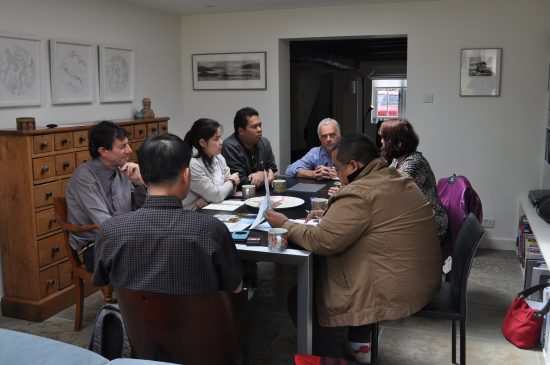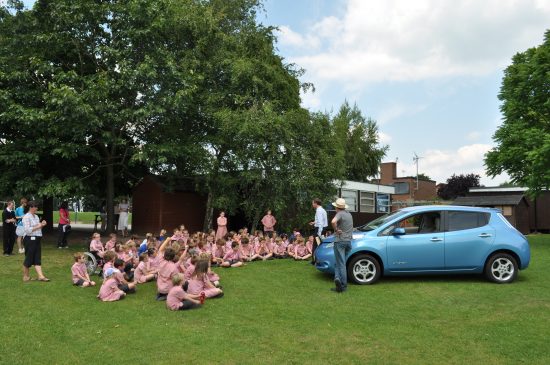In 2006, the people of Ashton Hayes banded together to tackle climate change. A decade on, they have cut their carbon emissions almost in half and leaders from far and wide are stopping by to learn more
Frustrated by the lack of strong environmental action by political leaders, 10 years ago, residents in a Cheshire village decided to take matters into their own hands. The ambition was bold: Ashton Hayes would become the first carbon neutral village in England.
“We want to show our children, grandchildren and future generations that we have done our best to stop Ashton Hayes contributing to global warming,” then parish council leader Naomi Deynem said in 2006, at the launch of the project.
So far, the village has reduced its carbon emissions by 40 per cent, but beyond the statistics, the measures have captured the world’s attention. More than 200 towns, from those in Norway to places in Taiwan, have visited or been in touch to find lessons worth taking home.

Thai public sustainability professionals have been among the many visitors to Ashton Hayes to learn from their Going Carbon Neutral project
Kate Harrison, an advocate for low impact lifestyles and one of the early members of the Going Carbon Neutral team of residents, says involving people from across the community has been key to the scheme’s success. More than 75 per cent of residents have been involved on some level at least once, while in 2015, 98 per cent of residents said they felt proud of the project’s achievements.
Harrison explains that they united the community around what people could easily contribute, rather than what they were doing wrong. From the outset, the volunteers leading the project pledged to be non-confrontational and non-political.
We want to show our children, grandchildren and future generations that we have done our best to stop Ashton Hayes contributing to global warming
“Instead of telling people what to do, we encouraged them to share ideas or come up with their own,” Harrison explains. “When people took a small action such as lowering thermostats or replacing light bulbs, they realised it was effective, so looked for more they could do. It just shows that anyone, anywhere can adapt ideas to deal with their local or national situations.”
Early efforts focused on behaviour change; interested residents were given tailored advice on ‘quick and cheap wins’ to affordably reduce energy use in their homes. The impact was felt quickly, with the village’s overall carbon emissions dropping by 20 per cent within the first 12 months. However, emission reductions then plateaued over the next two years. To maintain progress, the village needed to produce its own renewable energy.
The opportunity came in 2010 with a £400,000 government grant from the [now finished] Low Carbon Communities Challenge, and a community energy company was established to take the plan to the next level. Solar panels were installed on the roof of Ashton Hayes Primary School, where lessons were already involving pupils in the project, and on a newly built low-carbon sports centre.
“Working with the village primary school was ideal as young people can be inspired to make a difference. They have ‘pester power’ over parents and relatives and, of course, they represent the future,” says fellow Going Carbon Neutral leader Roy Alexander.
As a resident of Ashton Hayes and professor of sustainability at the University of Chester, Alexander helped guide the project. The university has incorporated the scheme into its masters courses and monitored results closely, lending residents’ efforts credibility and accountability. Data and findings are also published online for others to learn from.

Ashton Hayes Primary School pupils learn about electric vehicles as part of the village’s pledge to move towards carbon neutrality
While Alexander believes the journey has been just as important as the end goal, he says the ‘big vision’ of carbon neutrality is what has inspired so many. This ambition is now firmly embedded in the official Neighbourhood Plan, and the group’s sights are now set on raising enough money to turn the village pub – currently earmarked to be developed as housing – into a shared, low carbon community asset.
Despite the attention the village has received, those leading the low carbon charge are modest about their success. “There are hundreds of groups across the UK doing similar things,” says Alexander. “It may be easier in geographically defined communities, but suburbs of towns and cities have local identities and a sense of community, so there’s no reason why they can’t do the same thing.
“Individuals and households can achieve a lot, but working together provides a real sense of collective action. The whole becomes greater than the sum of the parts.”

Professor Roy Alexander says the ‘big vision’ of carbon neutrality is what has inspired so many in Ashton Hayes to reduce their environmental impact
All images by Garry Charnock
